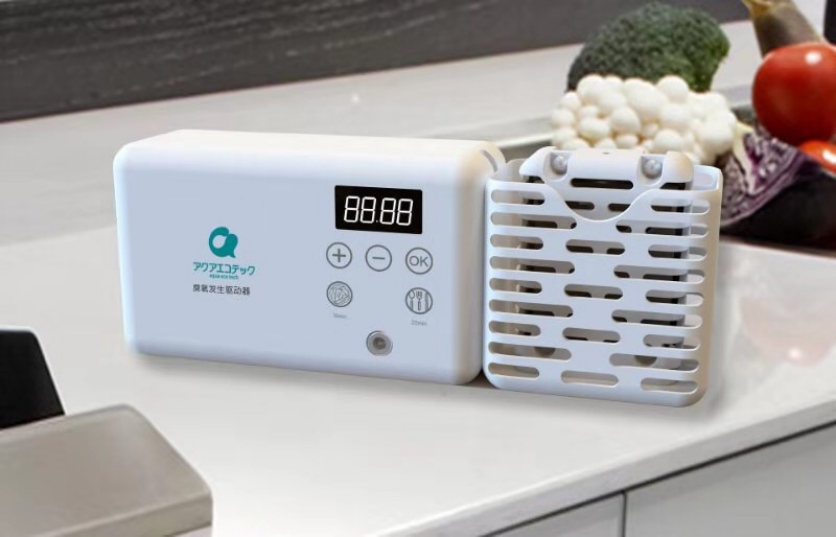El. pašto formato klaida
emailCannotEmpty
emailDoesExist
pwdLetterLimtTip
inconsistentPwd
pwdLetterLimtTip
inconsistentPwd

Kaip ozono generatoriai dirba valyti orą
Siekiant švaresnio ir sveikesnio patalpų oro,Ozono generatoriaipasirodė kaip populiarus sprendimas. Šiame tinklaraščio įraše mes ištirsime ozono generatorių darbo mechanizmą ir tai, kaip jie veiksmingai valo orą. Suprasti šį procesą labai svarbu priimti pagrįstus sprendimus dėl oro valymo metodų.
Kas yra ozono generatorius?
Ozono generatorius yra prietaisas, kuris gamina ozono dujas (O3), naudojant elektrinę energiją. Ozonas yra labai reaktyvi deguonies forma, galinti veiksmingai pašalinti kvapus, nužudyti bakterijas, virusus ir neutralizuoti kenksmingas chemines medžiagas ore.
Ozono generatorių darbo principas:
Ozono generatoriai dirba pagal koronos išmetimo principą. Procesas apima šiuos veiksmus:
2.1. Oro įsiurbimas:
Generatorius iš aplinkinės aplinkos traukia aplinkos orą. Šiame ore yra įvairių teršalų, tokių kaip dūmai, kvapai, bakterijos ir lakieji organiniai junginiai (LOJ).
2.2. Elektros išmetimas:
Generatoriaus viduje sukuriamas aukštos įtampos elektrinės iškrovos. Ši išleidimas gali būti generuojamas skirtingais būdais, tokiais kaip UV šviesa, šalta plazma ar koronos išleidimas. Dažniausias metodas yra koronos išleidimas, kuris apima oro pravažiavimą per aukštos įtampos elektrinį lauką.
2.3. Deguonies padalijimas:
Elektros iškrova padalija deguonies molekules (O2) į atskirus deguonies atomus. Šie atomai yra labai reaktyvūs ir siekia derinti su kitomis deguonies molekulėmis.
2.4. Ozono formavimasis:
Atskiri deguonies atomai sujungia su kitomis deguonies molekulėmis, kad susidarytų ozonas (O3). Tada šis naujai suformuotas ozonas išleidžiamas į orą.
Ozono reakcija su teršalais:
Išleistas į orą, „Ozone“ reaguoja su įvairiais teršalais, efektyviai valydamas orą. Reakcijos apima šiuos procesus:
3.1. Kvapo pašalinimas:
Ozono molekulės reaguoja su kvapu sukeliančiais junginiais, suskaidydamos jas į paprastesnes, ne tokias, kad molekulės. Šis procesas pašalina nemalonius kvapus, kuriuos sukelia dūmai, augintiniai, maisto gaminimas ir kiti šaltiniai.
3.2. Mikroorganizmo inaktyvacija:
Ozonas yra galingas oksiduojantis agentas, galintis sunaikinti bakterijas, virusus ir pelėsį. Kai ozonas liečiasi su šiais mikroorganizmais, jis sutrikdo jų ląstelių struktūrą, todėl jie tampa neaktyvūs ir negali daugintis.
3.3. LOJ neutralizavimas:
Lakieji organiniai junginiai (LOJ) yra įprasti įvairių šaltinių skleidžiami oro teršalai patalpose, įskaitant valymo priemones, dažus ir baldus. Ozonas reaguoja su LOJ, suskaidydamas juos į paprastesnius, mažiau kenksmingus junginius.
Saugos sumetimai:
Nors ozono generatoriai gali efektyviai valyti orą, svarbu juos naudoti atsakingai ir atsargiai. Ozonas, esant didelėms koncentracijoms, gali pakenkti žmonėms ir naminiams gyvūnėliams. Todėl labai svarbu laikytis gamintojo gairių ir užtikrinti tinkamą ventiliaciją, kai naudojami ozono generatoriai.
Išvada:
Ozono generatoriai dirba panaudodami koronos išleidimą ozono dujoms gaminti, o tai reaguoja su ore su teršalais, veiksmingai valydami ir išvalydami. Suprasdami ozono generatorių darbo mechanizmą, galime priimti pagrįstus sprendimus dėl oro valymo metodų ir užtikrinti švaresnę bei sveikesnę vidaus aplinką. Vis dėlto būtina atsakingai naudoti ozono generatorius ir prioritetą teikti saugumui, kad būtų išvengta galimos rizikos sveikatai.


